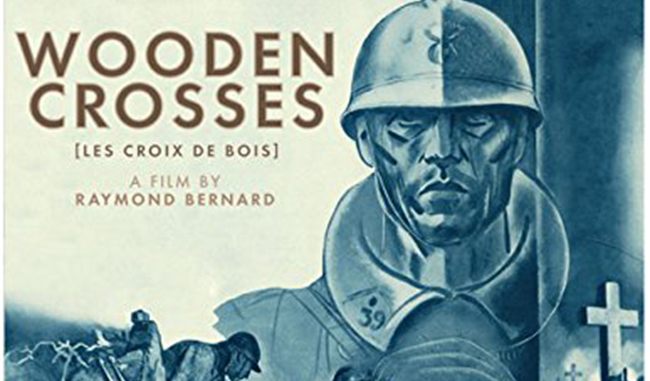
Wooden Crosses Review
 In 1930 Lewis Milestone’s epic World War I film based off Erich Maria Remarque’s novel, All Quiet on the Western Front was released to much applause and praise from critics. The anti-war book and the film were based off Remarque’s own experiences of the horrors of the trenches and although it is from a German perspective it could have been the view point of any combatants from any side. Two years later the French film Wooden Crosses also based off a book and dealing with the same subject was released in France and was equally powerful, realistic and showed the horrors of the conflict. However, despite screenings in subsequent years over Armistice Day history has not been so kind and the film disappeared into oblivion. In their on-going series, Masters of Cinema, Eureka! have re-addressed this as a part of the 100 year anniversary of the start of the conflict (albeit a few months late battles such as the second battle of Ypres, or Wipers as the Tommies put it took place in the spring of 1915).
In 1930 Lewis Milestone’s epic World War I film based off Erich Maria Remarque’s novel, All Quiet on the Western Front was released to much applause and praise from critics. The anti-war book and the film were based off Remarque’s own experiences of the horrors of the trenches and although it is from a German perspective it could have been the view point of any combatants from any side. Two years later the French film Wooden Crosses also based off a book and dealing with the same subject was released in France and was equally powerful, realistic and showed the horrors of the conflict. However, despite screenings in subsequent years over Armistice Day history has not been so kind and the film disappeared into oblivion. In their on-going series, Masters of Cinema, Eureka! have re-addressed this as a part of the 100 year anniversary of the start of the conflict (albeit a few months late battles such as the second battle of Ypres, or Wipers as the Tommies put it took place in the spring of 1915).
There is little in the way of plot in the film and follows a young would be student with his whole world, hopes and dreams ahead of him who willingly signs up as a soldier shortly after the outbreak of the Great War. After initial training he is sent to the front and introduced to his fellow soldiers, all French types. What follows is a series of battles, charges and street fighting in the Champagne region of France (it was filmed in the area around Rheims with many UXB and corpses from the conflict being unearthed during filming). The source novel was an account of the author, Roland Dorgelès, with one of the few differences surrounding the change of the voice in the novel from ‘I’ to ‘we’ in the film, only adding to the universality of the conflict. Director Raymond Bernard took great pride in trying to make the look and feel of the film as real as possible: defining the very distinction between the sounds of the different weapons and explosions. The exploding shells in the fields of mud are very realistic with the thud of the artillery and the shell exploding in the mud causing the mud and bodies to fly in the air. This is both one of the positives and negatives with Bernard’s film – there is so much concentration on the action and the battle scenes that there is little development of character and certainly no tedious love interest. Women are rendered to weeping mothers and cheating wives (the ‘angel of the hearth and the whore’ if you like) with one soldier dying and receiving a letter from his wife only concerned with dancing and cheating.
Comparisons with All Quiet on the Western Front are inevitable but the accompanying essays in the booklet and the extras only really make only a passing reference preferring instead to compare the film to Bernard’s other great film, Les Miserables (1934) also recently released by Eureka! in their Masters of Cinema series. But comparisons between Wooden Crosses with its American counterpart are worth noting. There are some stylistic similarities such as the double exposure at the opening of Wooden Crosses which mirrors the closing shots of what appear to be the ghosts of the fallen marching in All Quiet on the Western Front. The similarities do not end there and this could be why the French film has not survived the test of time with Remarque’s adaptation having greater characterisation. Needless to say that Bernard’s film is stunning to look and beautifully preserved with plenty of contextualising extras. But the focus on realism is its strong point and is worth several re-visits.
Chris Hick
